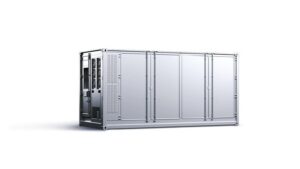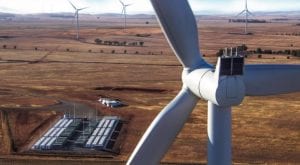Richmond Vanadium Technology has agreed to invest up to $5 million in Ultra Power Systems in a bid to capture projected growth opportunities in the vanadium redox flow battery sector in Australia and overseas.
VRFB’s are long-duration batteries that can store large amounts of electrical energy produced by solar and wind power generators on a daily basis.
Unlike lighter-weight lithium-ion batteries favoured in mobile storage, utility storage batteries using vanadium are restricted to stationary applications where weight is not a key factor.
The investment, by way of a subscription of up to 20,000 Ultra Power System shares, is subject to a successful listing of Richmond Vanadium on the Australian Securities Exchange and other conditions.
If completed, the pact between the two Australian companies will provide Ultra with funds for development and production of its proprietary Ultra V40 battery module and as well as a guaranteed supply source of vanadium.
Richmond Vanadium, meanwhile, would find itself in partnership with an Australian battery manufacturer as it prepares to develop a large vanadium mine and ahead of a forecast global growth spurt in VRFB deployments.
“We are taking the next step in creating a strategic partnership,” Ultra Chief Executive Brad Appleyard said. “The additional funding will facilitate the acceleration of Ultra’s development and planned modular electrolyte production.”
Analysis by market intelligence and advisory firm Guidehouse Insights indicates global annual deployments of VRFBs are expected to reach approximately 32.8 GWh a year by 2031. This represents a compound annual growth rate (CAGR) of 41 percent over the forecast period.
The VRFB deployment projected by Guidehouse would equate to between 127,500 and 173,800 tons of new vanadium demand per year by 2031, according to Vanitec, a global member group whose objective is to promote the use of vanadium-bearing materials
Vanadium is mainly used within the steel industry but is making inroads in its use in VRFBs, according to Vanitec.
A key advantage for VRFBs over other types of batteries is the reusability of the electrolyte, according to Guidehouse.
Liquid electrolyte used in VRFBs can be nearly 100 percent recovered, ,and with minimal processing steps and costs reused in another battery application,” Guidehouse said in a report.
This capability can be very advantageous as the energy storage industry strives for sustainability and a reliable supply chain, the report added.
Ultra’s business model focuses on the design, manufacture, installation, and maintenance of modular, integrated renewable power generation and energy storage systems through a network of local “flow” partners.
Ultra’s initial markets, both in Australia and overseas, include off-grid applications in mining, such as bore pumps, exploration camps, mining villages and ultimately full mine electrification. The need for community batteries, residential micro grids and the specific charging demands of the electric vehicle sector are also on Ultra’s radar.
Ultra believes its mixed acid electrolyte confers an energy storage and operating temperature advantage verses mainstream VRFB chemistries.
The company intends to list on the ASX sometime in the current fiscal year. Despite slower growth in historical deployments, VRFBs have significant ongoing projects that encourage integration of large-scale variable renewable energy on the electric grids, notes Guidehouse.
Sumitomo Electric in 2015 installed a 15 MW/60 MWh VRFB on the island of Hokkaido, Japan.
The installation was part of a demonstration project supported by Japan’s Ministry of Economy, Trader and Industry to determine how to best incorporate large-scale wind and solar into the electric grid.
The new VRFB system will be able to provide 17 MW for up to three hours or 51 MWh of energy capacity and serve the grid until March 2043.
Elsewhere, the Energy Superhub project, led by Pivot Power and Invinity in the United Kingdom, has a power output of 2 MW and an energy capacity of 5 MWh, enough to serve the daily electricity needs of roughly 600 households.










